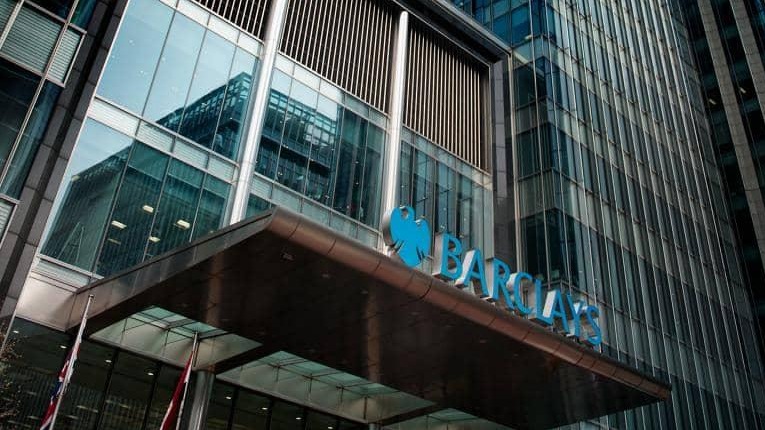As the global banking industry goes increasingly digital, the shift to mobile is helping bring millions of people into financial services for the first time.
Particularly in emerging economies, those that were previously ‘unbanked’ are getting access to accounts which are a significant driver to social mobility and business growth.
Huawei has used its big data and artificial intelligence (AI) resources to help a range of banks around the world move in this direction – replacing traditional data warehouses, upgrading to real-time analysis and utilising automation platforms.
Banking power in your pocket
Brett King, the chief executive of US mobile financial services provider Moven, recently argued that the smartphone has halved financial exclusion in just 10 years.
“In 2014, I predicted that by 2025 branches in western economies would be around 70 per cent of their pre-digital peak,” he stated. “That estimate seemed aggressive back in 2014, but today with the impact of COVID-19, it looks increasingly likely.”
Within five years it seems likely that most people with a basic value store of digital money - like a mobile wallet or super app - will have never seen the inside of a bank branch.
Banks around the world were already seeking to rationalise their branch estates, but this year many have accelerated these plans. In the UK in the last few months alone, Virgin Money, TSB and Co-operative Bank have all announced closures, although the government and regulators are warning the industry against cutting off those who still value in-branch contact and access to cash.
In Europe at least, the industry is trying to find a balance between a generally younger demographic who are happy to do everything via an app, and the often older or more vulnerable people who still expect a local branch for regular transactions.
Mobile banking accelerates in the global south
In this respect, those in Asia, Africa and Latin America are overtaking those in the West, with higher proportions of the population having at least basic banking services on their mobile devices.
In 2005, around 70 per cent of people in Kenya did not have a bank account, but today over 90 per cent have a mobile account stored on their SIM card, giving the ability to store and send money.
This has been made possible because of M-PESA, created by the telecoms operator Safaricom, which now lays claim to about 40 per cent of Kenya’s GDP running through its payment rails.
This rapid change gives Kenya a higher rate of financial inclusion than the United States, as the Federal Reserve approximates that 20 per cent of US households are unbanked or underbanked, while 97 per cent of the Kenyan adult population has access to a basic bank account or value store.
Meanwhile in India, the country’s largest mobile banking service Paytm has exploded in popularity. In 2016, it aimed to have 250 million users by 2020, but they are already at more than double that number, while traditional branch activity has continued to decline.
As of 2018, more than 1.2 billion Indian nationals have also enrolled in the Aadhaar identity card program which helps the people prove their identity and access to financial services.
And in China, mobile payments transaction have already exceeded the entire world’s number of transactions on credit and debit cards. This lack of need for branch access or physical payments is hailed as one of the reasons its economy has remained fairly stable during the COVID crisis.
IT helps drive inclusivity
Another example is in Ghana, where the central bank estimates that some seven million people are unbanked, representing 22 per cent of the country’s population. But while they may not have access to appropriate financial services, many have access to the internet, with online penetration in the country standing at around 64 per cent.
In 2018, Ghana Commercial Bank (GCB) began using Huawei’s G-Money solution, developing a mobile money platform that could be used for easy cross-platform payments.
The lender, which has served for more than six decades across 200 branches, also upgraded point of service terminals and ATMs, making them capable of supporting mobile money services.
The G-Money mobile money platform was launched in December 2019, gaining 60,000 new customers in the first month, representing 900 per cent growth. By April this year, GCB had more than 700,000 mobile money users.
An open cloud and micro-service architecture lets GCB rapidly scale and optimise its service, giving a competitive edge against network carriers in Ghana. The next stage will be a QR code-based mobile payment system, along with smart operations.
Financial inclusiveness is a goal for Huawei, as its mobile money solutions have been commercially deployed in 19 countries, serving over 206 million users – accounting for 22 per cent of registered mobile money accounts in emerging markets.
Its Platform + Ecosystem strategy is also developing big data and AI applications by collaborating with ecosystem partners. Over the past 10-plus years, Huawei has worked with more than 5,400 solution and service partners worldwide, serving over 1,600 financial institutions in more than 60 countries and regions, including 45 of the world’s largest 100 banks.
Huawei believes that, to successfully implement both mobile first and digital transformation strategies, the financial service industry needs to focus on three aspects: connectivity, digitalisation and business agility.
Smoothing the transition to digital
A poll of 129 financial services professionals by EY at the SIBOS conference unanimously (96 per cent) agreed that cash would be replaced by digital payments methods by the end of the next decade, with 59 per cent believing mobile payments will be the most common.
It also revealed that while respondents thought a cashless society could provide benefits - such as improved convenience (39 per cent) and financial crime prevention (36 per cent) - concerns remained over financial inclusion and data security.
The industry and authorities are taking action to ensure a smooth transition to this mobile future, with a European Commission Expert Group on Regulatory Obstacles to Financial Innovation - which comprises the likes of BBVA, AXA, Barclays, ING, the University of Ireland and the London School of Economics - highlighting the potential impacts of FinTech on consumers, from the perspective of financial inclusion and the ethical use of data.
Its report pointed out that as things currently stand, the benefits are not being realised fairly across the continent. “This is, to a significant extent, due to an absent, fragmented or unclear regulatory framework,” it stated, calling for a harmonisation of supervisory measures to support the scaling up of FinTech across Europe.
Bringing the issue into sharp relief was a report from FinTech accelerator Village Capital, which conducted interviews with investors, non-governmental organisations, financial institutions, academics and mobile operators, finding many barriers to refugee populations inside Europe getting access to financial services.
It pointed out that the pandemic will only accelerate these challenges, as many businesses have recently gone cashless to protect the health of workers and customers, which locks out anyone without a credit card.
"There is so much exciting innovation around financial health coming out of Europe, but European FinTechs face barriers around working with refugee populations,” explained Allie Burns, chief executive at Village Capital. "Changing that will require a coordinated effort from investors, financial institutions and government leaders."
To find out more, please click here.
Latest News
-
Klarna ‘slows down AI adoption’ after workforce cuts
-
Bhutan rolls out national crypto payment system for tourism in ‘world-first’
-
Coinbase to acquire Deribit for $2.9bn
-
Citigroup to face $1bn lawsuit over Mexican oil company fraud
-
HSBC launches tariffs financing tool for US customers
-
Stripe launches ‘world’s first’ AI foundation model for payments
Beyond compliance: Transforming document management into a strategic advantage for financial institutions
In this exclusive fireside chat, John Rockliffe, Pre-Sales Manager at d.velop, discusses the findings of Adapting to a Digital-Native World: Financial Services Document Management Beyond 2025 and explores how FSIs can turn document workflows into a competitive advantage.
Sanctions evasion in an era of conflict: Optimising KYC and monitoring to tackle crime
The ongoing war in Ukraine and resulting sanctions on Russia, and the continuing geopolitical tensions have resulted in an unprecedented increase in parties added to sanctions lists.
Achieving operational resilience in the financial sector: Navigating DORA with confidence
Operational resilience has become crucial for financial institutions navigating today's digital landscape riddled with cyber risks and challenges. The EU's Digital Operational Resilience Act (DORA) provides a harmonised framework to address these complexities, but there are key factors that financial institutions must ensure they consider.
Legacy isn’t the enemy: what FSIs can do to keep their systems up and running
In this webinar we will examine some of the steps FSIs have already taken to rigorously monitor and test systems – both manually and with AI-powered automation – while satisfying the concerns of regulators and customers.
© 2019 Perspective Publishing Privacy & Cookies














Recent Stories